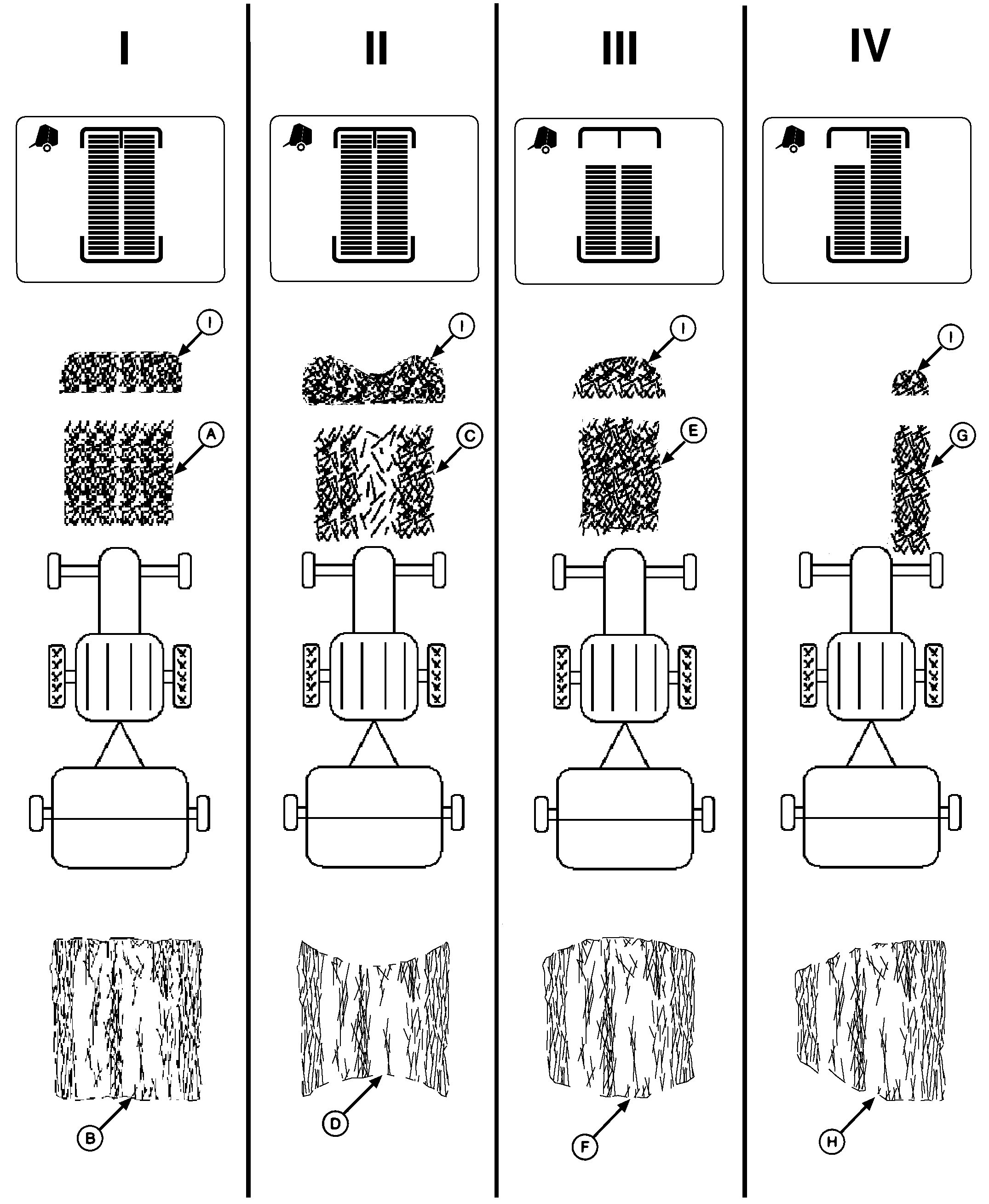Making a Bale with Bale Shape Indicators

|
OUCC006,0000691 -19-13MAY02-1/2 |
|
The illustration on the facing page and the following information describe the relationship between the monitor-controller display, windrow variations and actual bale shape. To ensure optimum bale shape and maximum bale density, the top bar should be shown on BOTH sides of the bale shape indicator display as shown in Example I. The top bars should be displayed when bale is being tied. Refer to "Guideline to Form a Good Bale" in this section. I- Best shape bales (B) are formed when windrow (A) has uniform density side-to-side and the width is the same as bale chamber. Weaving is not necessary. If this is not practical, create windrows up to one-half the width of the bale chamber and follow the bale shape bars. (Refer to "Guideline to Form a Good Bale" in this section.) II- If full-width windrow (C) is heavy on the outside edges and light at the center, an hourglass shaped bale (D) will be formed even though bale shape bars are balanced and all lit. If possible, weaving back and forth across windrow will help fill the middle of the bale. Otherwise, proper windrow formation (raking, etc.) may be needed. III- Bale shape bars will not reach maximum height and a barrel shaped bale (F) is formed if any of the following conditions exist: |
If windrow is almost as wide as the bale chamber, reduce tractor rpm and increase ground speed to spread material across pickup. Windrow preparation should be less than one-half bale chamber or full width of bale chamber. If necessary, rake windrow to obtain correct width. Bale shape bars may not reach maximum height when operating at reduced bale density and/or using variable core option. This is also true when operating in certain crops such as third cut grass or short wheat straw, because ends of bale are soft. IV- If narrow windrow (G) is baled without weaving back and forth, a cone shaped bale (H) will be formed.
Weave back and forth across narrow windrow to keep bale shape bars as high as possible. |
OUCC006,0000691 -19-13MAY02-2/2 |